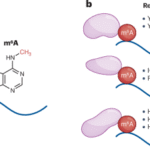Recent studies have uncovered a surprising and ingenious way that bacteria defend themselves against viral attacks, specifically from bacteriophages (phages), the viruses that infect bacteria. Published in Science, this research reveals that bacteria can create a brand-new gene in response to a viral threat—a process that challenges our traditional understanding of how genetic information flows within cells. This report explores the details of these findings and considers their broader implications for science and medicine.
We usually think of viruses as something that infects humans, but bacteria have been battling their own viral enemies for billions of years. To survive, they’ve developed various defense mechanisms. The CRISPR-Cas system is one famous example—one that has been harnessed for gene editing in recent years. But these new studies highlight a different and unexpected bacterial defense: a mechanism that allows bacteria to craft a unique gene, called neo, to fend off viral invaders.
This gene isn’t something the bacteria start out with; rather, it’s something they conjure up on the fly, thanks to enzymes known as reverse transcriptases. These enzymes have a special talent: they can turn RNA back into DNA, reversing the usual direction of genetic information flow (which typically goes from DNA to RNA to protein).
The Mechanism at Work
Reverse Transcriptases and the Creation of Neo: Reverse transcriptases are enzymes best known for their role in viruses like HIV, where they convert RNA into DNA to help the virus replicate. However, it turns out that bacteria also have these enzymes. When a phage attacks, certain bacteria use reverse transcriptases to copy a short RNA sequence into DNA, creating the neo gene.
Building the Neo Gene: What’s remarkable is that the bacteria don’t just make a simple DNA copy of the RNA. Instead, they string together many copies of this sequence, forming a long chain that eventually functions as a gene. This new gene is unusual because it has multiple promoter fragments—regions that help start the process of making proteins—at different ends. By linking these sequences together, the bacteria effectively create a working gene from what were originally separate pieces.
The Role of the Neo Protein: The newly formed neo gene then produces a protein that forces the bacterial cells to enter a dormant state. In this state, the cells effectively shut down, depriving the invading phages of the resources they need to replicate. Interestingly, the bacteria only activate this gene when they’re under attack, likely because producing this protein under normal conditions could be harmful to the bacteria themselves.
How the Discovery Was Made?
The discovery came from two independent research teams, both of which were trying to solve the mystery of how certain bacteria defend themselves against phages. One team was led by Stephen Tang and Samuel Sternberg at Columbia University, and the other by Feng Zhang and Max Wilkinson at MIT, a pioneer in CRISPR technology. Both teams used Escherichia coli (E. coli), a commonly studied bacterium, to investigate this defense mechanism.
By transferring the DNA responsible for this system from another bacterium into E. coli, they observed that, when attacked by phages, the engineered E. coli cells used reverse transcriptase to generate the neo gene. This gene then produced the antiviral protein, effectively blocking the phages from taking over.
Why This Matters
Rethinking Genetic Information Flow: This discovery challenges the long-held belief that genetic information flows in one direction—from DNA to RNA to proteins. The fact that bacteria can reverse this process to create a new gene in response to an immediate threat is both surprising and thought-provoking. It opens up new questions about what other secrets may be hidden within the genomes of different organisms, including our own.
Potential Applications in Biotechnology: The ability to create new genes on the fly could have exciting applications in biotechnology. For instance, scientists might be able to use a similar process to engineer cells that can produce new proteins or respond to environmental changes in innovative ways. This could lead to advances in medicine, agriculture, and beyond.
A Broader Biological Impact: The research suggests that this type of defense mechanism might be more widespread among bacteria than previously thought—around 5% of bacteria studied so far have this capability. It’s also possible that similar systems exist in other organisms, including humans. If so, this could lead to new ways of understanding and potentially manipulating how cells respond to viruses and other threats.
This discovery of the neo gene and its role in bacterial defense is a significant step forward in our understanding of how life fights back against viruses. It highlights the resourcefulness of bacteria and challenges our assumptions about how genetic information is used and stored. As researchers continue to explore this mechanism, we may uncover new tools for battling diseases and engineering life in ways we never imagined.











